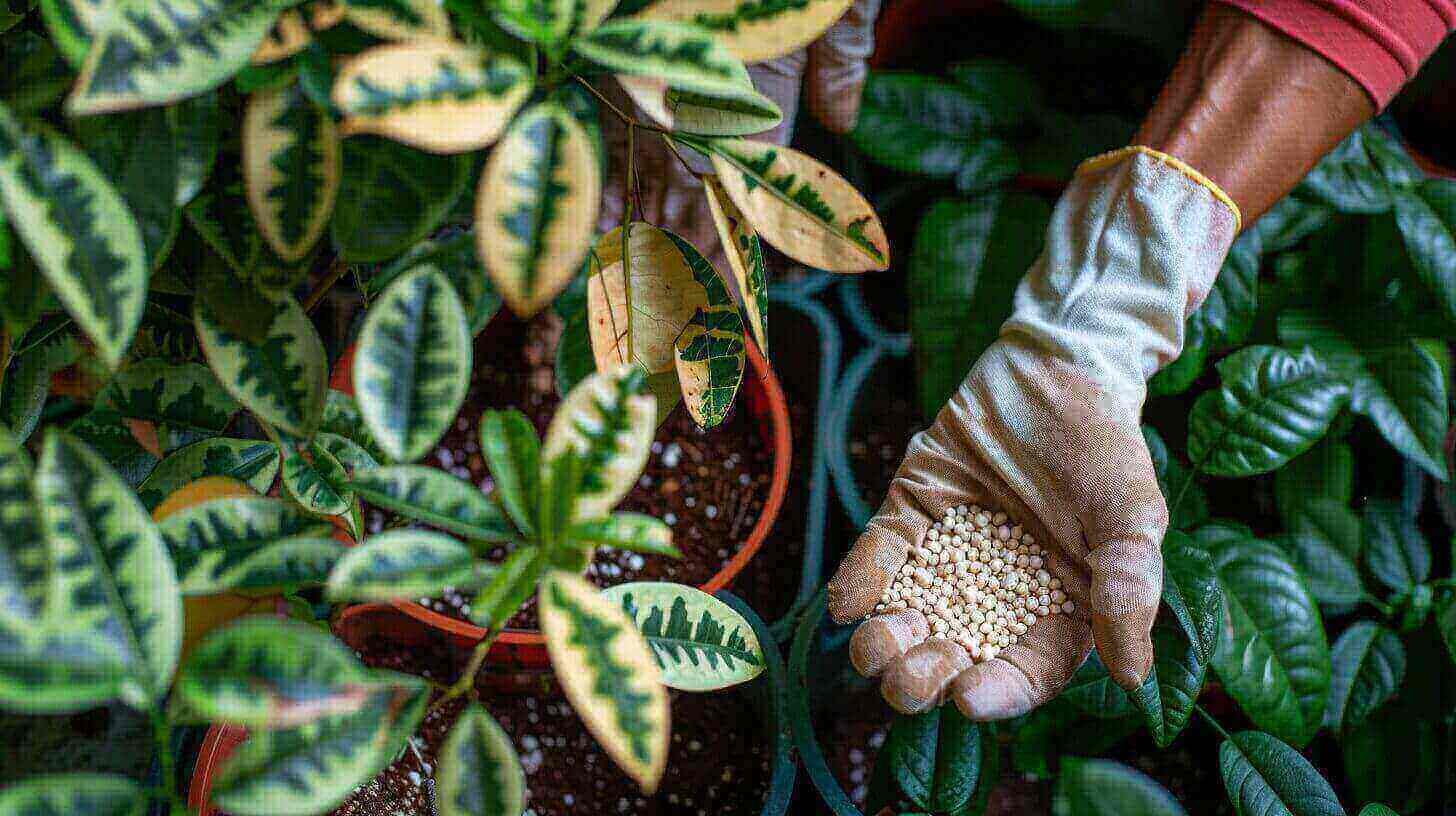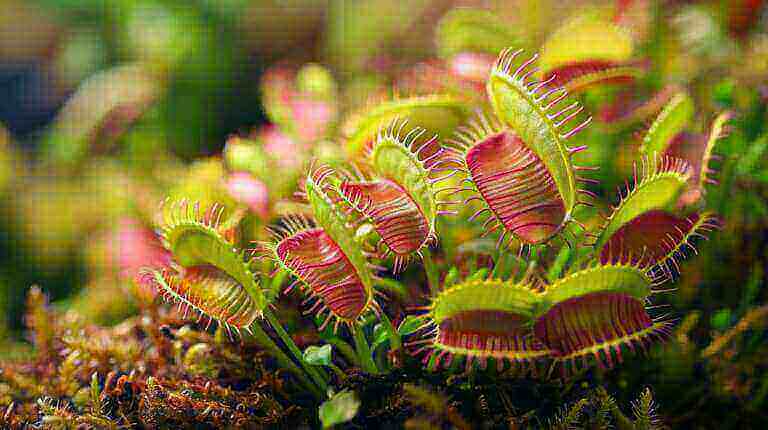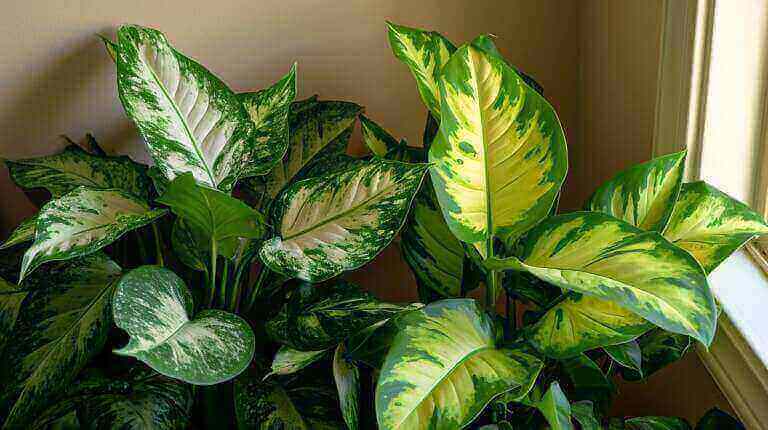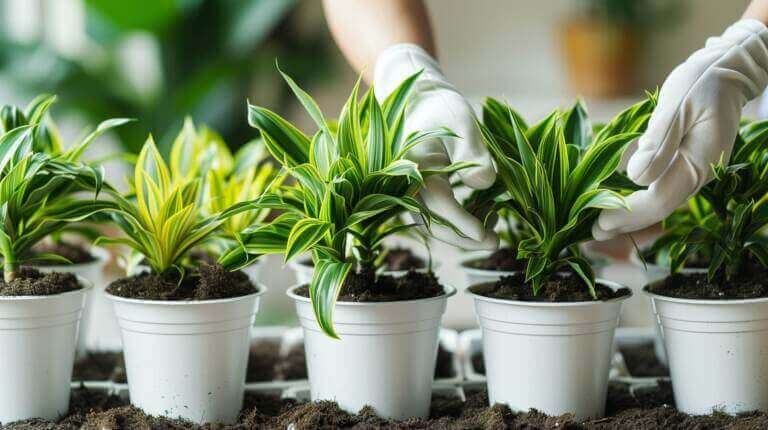How to Identify and Fix Nutrient Deficiencies on Schefflera Umbrella Tree
Nutrient deficiencies can have a significant impact on the health and appearance of schefflera plants, also known as umbrella trees. Identifying and addressing these deficiencies is crucial for maintaining the plant’s health and promoting optimal growth. In this article, I will explore common nutrient deficiencies that affect schefflera plants and provide tips on how to identify and rectify them. By understanding and addressing these issues, you can ensure your schefflera plants thrive and remain vibrant.
Key Takeaways:
- Yellow leaves on schefflera plants may indicate nutrient deficiencies.
- Proper care and maintenance are essential for healthy schefflera plants.
- Pruning schefflera plants can promote compact growth and bushy foliage.
- Identifying and addressing common issues such as overwatering and nutrient deficiencies is crucial.
- Regular watering, fertilizing, and pest prevention contribute to the overall health of schefflera plants.
The Impact of Nitrogen, Phosphorus, and Potassium Deficiencies
Nitrogen, phosphorus, and potassium are vital nutrients for the growth and development of schefflera plants. A deficiency in any of these elements can have noticeable effects on the plant’s health and overall appearance. It is important to be able to identify and address these deficiencies promptly to ensure the well-being of your schefflera plants.
Nitrogen deficiency in schefflera plants is relatively rare but can result in light green or yellow discoloration of the oldest leaves. As the deficiency progresses, the entire plant may exhibit a light green color, and growth may be stunted. Phosphorus deficiency is less common, particularly in Florida landscape plants, but it can cause wine-red coloration on older leaves. Potassium deficiency, although occasional, manifests as necrotic spotting, interveinal chlorosis, or marginal necrosis on the oldest leaves.
Table:
| Nutrient | Symptoms of Deficiency |
|---|---|
| Nitrogen | Light green or yellow discoloration of oldest leaves, overall light green coloration, reduced growth. |
| Phosphorus | Wine-red coloration on older leaves. |
| Potassium | Necrotic spotting, interveinal chlorosis, or marginal necrosis on oldest leaves. |
Addressing Common Micronutrient Deficiencies
Micronutrient deficiencies can have a significant impact on the health and vitality of schefflera plants. It is crucial to identify and address these deficiencies promptly to ensure the plants thrive. Three common micronutrient deficiencies that affect schefflera plants are magnesium deficiency, iron deficiency, and manganese deficiency.
Magnesium Deficiency
Magnesium deficiency is the most prevalent micronutrient deficiency in schefflera plants. It manifests as interveinal and/or marginal chlorosis on older leaves, where the veins remain green while the areas between them turn yellow. Severe magnesium deficiency can lead to leaf drop and stunted growth.
Iron Deficiency
Iron deficiency is commonly observed in schefflera plants grown in alkaline or poorly drained soils. The main symptom is interveinal chlorosis, where the tissue between the leaf veins turns yellow while the veins themselves remain green. The affected leaves may also be smaller than normal.
Manganese Deficiency
Manganese deficiency can occur in schefflera plants and is characterized by interveinal chlorosis, poor leaf development, and tip die-back in certain species. It is important to note that manganese deficiency is less common than magnesium and iron deficiencies in these plants.
To address micronutrient deficiencies in schefflera plants, it is recommended to use a balanced fertilizer specially formulated for houseplants or tropical foliage plants. This type of fertilizer typically contains the necessary micronutrients, including magnesium, iron, and manganese. Dilute the fertilizer according to the manufacturer’s instructions and apply it regularly to provide the plants with adequate nutrition.
| Micronutrient Deficiency | Symptoms |
|---|---|
| Magnesium Deficiency | Interveinal and/or marginal chlorosis on older leaves, leaf drop, stunted growth |
| Iron Deficiency | Interveinal chlorosis, reduced leaf size |
| Manganese Deficiency | Interveinal chlorosis, poor leaf development, tip die-back |
The Role of Boron in Umbrella Plant Nutrition
Boron plays a crucial role in the nutrition of schefflera plants, although boron deficiency is relatively rare in these plants. When a schefflera plant experiences a boron deficiency, it can exhibit distinct symptoms that are important to recognize and address promptly. Cupped leaves and shoot die-back are common indicators of boron deficiency, particularly in Chinese hibiscus. The leaves may appear puckered or have a dark green coloration, and the internodes may be shorter than usual. In severe cases, shoot die-back and rosette effects may occur.
Boron deficiency in schefflera plants is typically caused by leaching on sandy soils or drying in other soil types. It can also occur in plants growing in soil with low boron content. The deficiency can impact the overall health and growth of the plant, leading to stunted or abnormal development. Therefore, it is essential to address boron deficiency to promote healthy growth and prevent further damage.
To address a boron deficiency in schefflera plants, it is recommended to apply a foliar spray or use a fertilizer that contains boron. Applying a foliar spray directly to the leaves allows for quick absorption and utilization of the nutrient. Alternatively, using a fertilizer with boron can provide a long-term solution to prevent and treat deficiencies. It is important to follow the instructions provided by the manufacturer regarding the application rate and frequency to ensure the proper dosage.
Table: Symptoms of Boron Deficiency in Schefflera Plants
| Symptoms | Description |
|---|---|
| Cupped leaves | Leaves appear puckered or distorted, with a cup-like shape. |
| Shoot die-back | Stunted or abnormal growth of shoots, leading to die-back of the plant. |
| Short internodes | The spaces between nodes on the stem are shorter than usual. |
Proper Watering and Potting Techniques For Umbrella Tree
Proper watering techniques and potting practices are essential for maintaining the health and vitality of schefflera plants. By understanding the specific watering needs of these plants and using the right potting techniques, you can help ensure optimal growth and prevent common issues such as overwatering or waterlogging.
Watering Techniques
When it comes to watering schefflera plants, it’s important to strike a balance between allowing the soil to dry out and avoiding excessive dryness. These plants are more tolerant of occasional dry spells than overwatering, so it’s best to let the top inch or two of the soil dry out between waterings. This helps prevent root rot and keeps the plants healthy.
- Watering frequency: Typically, schefflera plants need to be watered every 7 to 10 days. However, the frequency may vary depending on factors such as temperature, humidity, and the type of potting soil used.
- Bottom watering: Another effective watering technique for schefflera plants is bottom watering. This involves placing the plant pot in a tray filled with water and allowing the roots to absorb moisture from the bottom. Bottom watering promotes healthy root growth and helps prevent waterlogging.
Potting Wisdom
The choice of pot and potting soil is crucial for the overall health and growth of schefflera plants. Here are some potting wisdom tips to keep in mind:
- Pot size: Choose a pot that provides adequate space for root growth without being too large. A pot that is 1-2 inches wider than the root ball is generally sufficient. Using a larger pot can lead to waterlogging issues and hinder healthy growth.
- Potting soil: Opt for a well-draining soil mix specifically formulated for houseplants. Adding perlite or pumice to the soil can improve drainage and prevent waterlogging.
- Repotting: Repot young schefflera plants annually and older plants every two to three years to ensure they have enough room to grow. Trimming the roots and shoots during repotting helps maintain a balanced root-to-crown ratio, promoting optimal growth and overall plant health.
| Watering Tips | Potting Tips |
|---|---|
| Allow the soil to dry out between waterings | Choose a pot 1-2 inches wider than the root ball |
| Bottom watering promotes healthy root growth | Use well-draining soil mix |
| Avoid overwatering and waterlogging | Repot young plants annually, older plants every 2-3 years |
Maintaining Optimal Growth Through Pruning and Repotting
Pruning and repotting are essential maintenance practices for schefflera plants that can help promote healthy growth and maintain their desired shape. Pruning allows you to control the size and shape of the plant, encouraging compact growth and bushier foliage. The best time to prune schefflera plants is in the spring, but it can be done at other times as well.
During pruning, it is important to remove any dead, damaged, or overgrown branches. This not only improves the appearance of the plant but also allows for better air circulation and light penetration, which are vital for overall plant health. Additionally, removing crowded branches helps maintain a balanced root-to-crown ratio, ensuring optimal growth.
When it comes to repotting schefflera plants, it’s important to choose a pot that is slightly larger than the current one. This provides adequate space for root growth and prevents the plant from becoming root-bound. Use a well-draining potting mix to ensure proper water drainage and avoid waterlogging, which can lead to root rot. Repotting should be done every two to three years for mature plants and annually for younger ones to accommodate their growth.
Transplanting schefflera plants can be done if they outgrow their current pot or if you want to change their location. It’s recommended to transplant in the spring when the plant is actively growing. Carefully remove the plant from its current pot, gently untangle any tangled roots, and place it in a new pot with fresh potting mix. Water the plant thoroughly after transplanting to help it establish in its new environment.
| Pruning Tips | Repotting Tips |
|---|---|
| Prune in spring for best results. | Choose a slightly larger pot than the current one. |
| Remove dead, damaged, or overgrown branches. | Use a well-draining potting mix. |
| Promote air circulation and light penetration. | Repot every 2-3 years for mature plants. |
| Improve overall plant health and appearance. | Repot annually for younger plants. |
By incorporating pruning and repotting into your schefflera plant care routine, you can ensure optimal growth and maintain a healthy, vibrant plant. Remember to prune with care, removing any dead or overgrown branches to promote compact growth and bushier foliage. When repotting, choose the right size pot and provide a well-draining potting mix to support root health. These simple maintenance practices will help your schefflera thrive and continue to beautify your space.
Identifying and Addressing Common Issues
Schefflera plants, like any other plants, can face various problems and challenges that can affect their health and appearance. It is important to be vigilant and proactive in identifying and addressing these issues to ensure the well-being of your schefflera plants.
One common issue that schefflera plants may experience is leaf loss. This can be caused by several factors, including overwatering, underwatering, incorrect light conditions, temperature stress, nutrient deficiencies, pest infestations, and diseases. It is essential to evaluate the environment and care practices to determine the underlying cause of leaf loss and take appropriate measures to rectify the situation.
Overwatering is a common problem for schefflera plants, leading to root rot and other issues. It is important to ensure that the plant is not sitting in excess water and that the soil is allowed to dry out between waterings. On the other hand, underwatering can also result in leaf loss and cause the plant to become stressed. Adequate watering practices, allowing the soil to slightly dry out before watering again, can help maintain a healthy balance.
Another factor to consider is the light conditions. Schefflera plants require bright but indirect light to thrive. Insufficient or excessive light can cause leaf loss and impact overall plant health. It is important to find a suitable location for your schefflera plant where it can receive the right amount of light.
Nutrient deficiencies can also contribute to leaf loss in schefflera plants. Ensuring that your plant receives the necessary nutrients, such as nitrogen, phosphorus, potassium, magnesium, and micronutrients, can help prevent deficiencies and promote healthy growth. Regular fertilization with a balanced fertilizer specifically formulated for indoor plants can be beneficial.
Pest infestations, such as spider mites, scale insects, mealybugs, and aphids, can also cause leaf loss in schefflera plants. Regularly inspecting your plant for signs of pests and taking appropriate measures, such as using insecticidal soap or neem oil, can help control and prevent infestations.
Lastly, certain diseases, such as leaf spot, can also lead to leaf loss. Proper sanitation practices, including removing infected leaves and avoiding overhead watering, can help prevent the spread of diseases and maintain the health of your schefflera plants.
| Issue | Cause | Solution |
|---|---|---|
| Leaf Loss | Overwatering, Underwatering, Incorrect light, Temperature stress, Nutrient deficiencies, Pest infestations, Diseases | Adjust watering practices, Ensure proper light conditions, Monitor temperature, Address nutrient deficiencies, Control pests, Practice good sanitation |
Nurturing Healthy Schefflera Plants
To ensure your schefflera plants thrive and remain vibrant, proper care and maintenance are essential. Here are some key tips for nurturing healthy schefflera plants:
Schefflera Plant Care
Regular care is important for the well-being of schefflera plants. This includes providing them with adequate water, balanced nutrients, and suitable growing conditions. Avoid overwatering or underwatering the plants, as both can lead to stress and leaf loss. It’s best to allow the soil to dry slightly between waterings.
Leaf Care
The leaves of schefflera plants are a good indicator of their overall health. Pay attention to any changes in color, shape, or texture. Yellowing or wilting leaves may be a sign of nutrient deficiencies or pest infestations. Regularly inspect the leaves and promptly address any issues to maintain their vitality.
Nutrient Maintenance
Proper nutrient maintenance is crucial for the optimal growth of schefflera plants. Fertilize them regularly with a balanced plant food rich in nitrogen, phosphorus, and potassium. Additionally, micronutrients like magnesium and iron are important for their overall health. Follow the recommended dosage and schedule to provide the necessary nutrients for your plants.
Pest Prevention
To prevent pest infestations, regularly check your schefflera plants for signs of common pests such as spider mites, scale insects, mealybugs, and aphids. If you notice any pests, take immediate action to control and eliminate them. You can use organic pest control methods or consult with a professional if needed.
By following these care tips and giving your schefflera plants the attention they need, you can ensure they remain healthy and vibrant for years to come.
FAQ
How do I identify a nutrient deficiency in my schefflera plant?
Nutrient deficiencies in schefflera plants can be identified through specific leaf symptoms such as discoloration, chlorosis, necrosis, and poor leaf development.
What are the common nutrient deficiencies that affect schefflera plants?
Common nutrient deficiencies in schefflera plants include nitrogen, phosphorus, potassium, magnesium, iron, manganese, and boron deficiencies.
How can I fix a nitrogen deficiency in my schefflera plant?
To fix a nitrogen deficiency, you can apply a nitrogen-rich fertilizer or amend the soil with organic matter that contains nitrogen.
How do I address a phosphorus deficiency in my schefflera plant?
To address a phosphorus deficiency, you can apply a phosphorus-rich fertilizer or add bone meal to the soil, which is high in phosphorus.
What should I do to rectify a potassium deficiency in my schefflera plant?
To rectify a potassium deficiency, you can apply a potassium-rich fertilizer or add potassium sulfate or potassium nitrate to the soil.
How can I treat a magnesium deficiency in my schefflera plant?
Treating a magnesium deficiency involves applying magnesium sulfate (Epsom salt) to the soil or using a foliar spray of magnesium sulfate.
What is the best way to address an iron deficiency in my schefflera plant?
To address an iron deficiency, you can apply iron chelates to the soil or use iron foliar sprays to provide the plant with the necessary iron nutrients.
How do I rectify a boron deficiency in my schefflera plant?
To rectify a boron deficiency, you can apply a boron-rich fertilizer or foliar spray, or amend the soil with borax or boric acid.
What are the proper watering techniques for schefflera plants?
Schefflera plants prefer intermittent watering, allowing the soil to dry slightly between waterings. Bottom watering can also encourage healthy root growth.
How should I choose the right pot size for my schefflera plant?
Choose a pot that provides adequate space for root growth without causing waterlogging. It’s best to repot young plants annually and older plants every two to three years.
When is the best time to prune schefflera plants?
The best time to prune schefflera plants is in the spring, but pruning can also be done later in the year if needed.
How do I prevent and address common problems and pests affecting schefflera plants?
Preventing and addressing issues such as overwatering, underwatering, incorrect light conditions, temperature stress, nutrient deficiencies, pest infestations, and diseases require appropriate care, pest control, and disease management practices.
What are the essential steps for nurturing healthy schefflera plants?
Nurturing healthy schefflera plants involves regular watering, balanced nutrient fertilization, proper pruning, repotting in well-draining soil, and addressing common issues and pests promptly.







